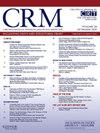Transcatheter edge-to-edge repair for the management of secondary mitral regurgitation – CRT 2025 Beyond the Guidelines
IF 1.9
Q3 CARDIAC & CARDIOVASCULAR SYSTEMS
引用次数: 0
Abstract
Secondary mitral regurgitation (SMR) remains a prevalent and challenging complication in patients with heart failure (HF), associated with poor prognosis despite optimal guideline-directed medical therapy (GDMT) and cardiac resynchronization therapy. Current American and European guidelines recommend GDMT as first-line therapy, with transcatheter edge-to-edge repair (TEER) reserved for severe symptomatic SMR patients who remain refractory. However, both guidelines preceded the reporting of pivotal randomized controlled trials (RESHAPE-HF2, MATTERHORN, and EFFORT) and emerging evidence in new clinical scenarios. At the 2025 Cardiovascular Research Technologies (CRT) conference, the session “Beyond the Guidelines” convened an expert panel to address existing gaps and evolving indications. Discussions highlighted unresolved questions regarding TEER in moderate SMR, asymptomatic patients, atrial functional MR, cardiogenic shock, and as a bridge in end-stage HF. Panel consensus emphasized the need for dedicated randomized trials in these subgroups and consideration of broader TEER use based on registry and observational data demonstrating procedural safety and clinical benefit. This review summarizes current evidence, knowledge gaps, and expert perspectives to inform future guideline development and optimize management of SMR across the spectrum of HF.
经导管边缘到边缘修复治疗继发性二尖瓣返流- CRT 2025超越指南
继发性二尖瓣反流(SMR)仍然是心力衰竭(HF)患者中一个普遍且具有挑战性的并发症,尽管有最佳指导药物治疗(GDMT)和心脏再同步化治疗,但仍与预后不良相关。目前美国和欧洲的指南推荐GDMT作为一线治疗,经导管边缘到边缘修复(TEER)保留给严重症状的难治性SMR患者。然而,这两个指南都先于关键性随机对照试验(shape - hf2、MATTERHORN和EFFORT)的报告和新临床情况的新证据。在2025年心血管研究技术(CRT)会议上,“超越指南”会议召集了一个专家小组,以解决现有差距和不断发展的适应症。讨论强调了关于中度SMR、无症状患者、心房功能性MR、心源性休克以及作为终末期HF的桥梁的TEER尚未解决的问题。小组共识强调需要在这些亚组中进行专门的随机试验,并考虑基于证明程序安全性和临床益处的注册和观察数据更广泛地使用TEER。这篇综述总结了目前的证据、知识差距和专家观点,为未来指南的制定提供信息,并优化整个HF谱的SMR管理。
本文章由计算机程序翻译,如有差异,请以英文原文为准。
求助全文
约1分钟内获得全文
求助全文
来源期刊

Cardiovascular Revascularization Medicine
CARDIAC & CARDIOVASCULAR SYSTEMS-
CiteScore
3.30
自引率
5.90%
发文量
687
审稿时长
36 days
期刊介绍:
Cardiovascular Revascularization Medicine (CRM) is an international and multidisciplinary journal that publishes original laboratory and clinical investigations related to revascularization therapies in cardiovascular medicine. Cardiovascular Revascularization Medicine publishes articles related to preclinical work and molecular interventions, including angiogenesis, cell therapy, pharmacological interventions, restenosis management, and prevention, including experiments conducted in human subjects, in laboratory animals, and in vitro. Specific areas of interest include percutaneous angioplasty in coronary and peripheral arteries, intervention in structural heart disease, cardiovascular surgery, etc.
 求助内容:
求助内容: 应助结果提醒方式:
应助结果提醒方式:


